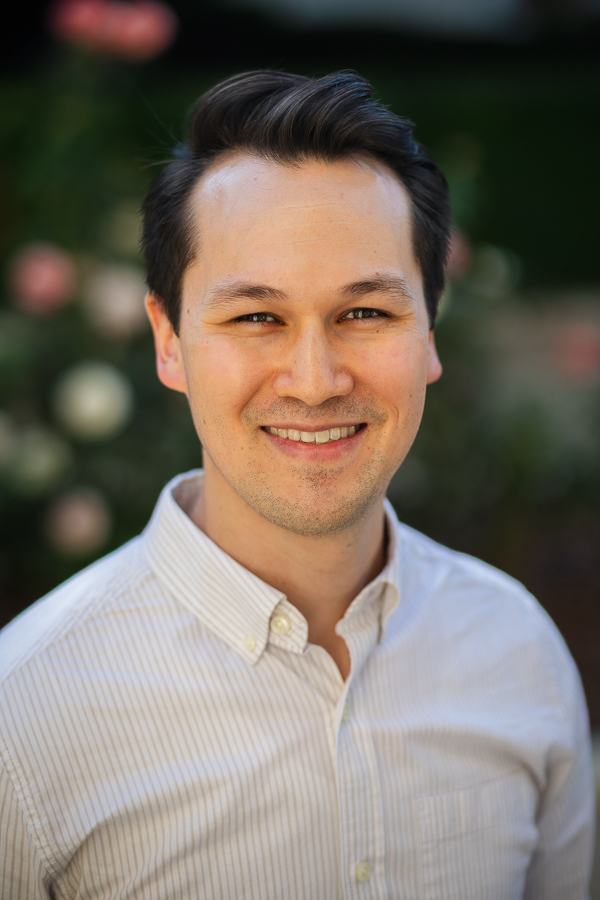You’re wondering why you or a loved one struggles with addiction. Usually a quick internet search gives two tidy yet disappointing answers: (1) It’s genetic, or (2) it’s self-destructive behavior. But you know from experience addiction is much more complex.
This article explores how addiction can arise from shame. We’ll look at addiction through the lens of self-psychology, a branch of psychoanalysis, to help you understand that the struggles of addiction can be tied to unmet needs for affection and autonomy, rather than just biology or self-sabotage. By recognizing the role of shame, you can begin to approach healing with compassion for yourself.
Traditional Views of Addiction Fall Short
Society often views addiction through a medicalized lens, focusing on individual vulnerabilities to substances. This perspective emphasizes biological and behavioral factors but overlooks the obvious emotional underpinnings that drive addictive behaviors.
Common Medicalized Explanations for Addiction
- Genetic Explanations: Research suggests that certain genetic predispositions can increase susceptibility to addiction, making some individuals more reactive to substances like alcohol or opioids.
- Self-Sabotage Explanations: Addiction is sometimes framed as a form of unconscious self-destruction, where individuals engage in harmful behaviors due to low self-esteem or unresolved trauma.
While these views provide partial insights, they don’t fully address why addiction feels so intertwined with personal shame.
Shame Drives Addiction in Self-Psychology
Self-psychology, developed by Heinz Kohut, shifts the focus to shame as a core driver of addiction. In this framework, addiction arises from early experiences where natural needs for connection and independence are suppressed, leading to a cycle of hidden longings and self-reproach. Understanding this helps explain “why do some people have addiction”. It’s often a maladaptive attempt to fulfill unmet emotional needs in a private, shame-filled way.
Close Relationships Build a Healthy Self
Self-psychology emphasizes the development of a healthy and strong self through close and loving caregivers. Psychological health depends on taking in positive interactions that foster independence and intimacy.
Selfobjects are people, things, or experiences outside of us that help build and keep our sense of who we are. They meet key emotional needs. They’re especially important when kids are growing up, but they matter all through life. There are three main kinds: mirroring (which makes you feel valued), idealizing (which gives you strength from someone you look up to), and twinship (which makes you feel like you belong because of similarities).
| Traditional View Of Addiction | Self-Psychology View of Addiction |
|---|---|
| Focuses on genetic vulnerabilities and self-sabotage | Emphasizes shame from unmet relational needs |
| Treats addiction as a biological disease | Sees addiction as a dysregulated attempt to fulfill longings for affection and autonomy |
| Interventions: Medication and behavioral therapy | Interventions: Building awareness and healthy selfobject relationships |
Examples of Selfobjects in Self-Psychology
Mirroring Selfobjects
These help by showing approval and making the child feel special and seen, which builds confidence.
- A mom who gets really excited and claps when her child takes their first steps, making the kid feel proud and important.
- A dad who smiles and says “Great job!” when his child shows him a drawing, helping the kid feel noticed and good about themselves.
- A parent who cheers for their child’s little wins, like learning to tie shoes, which makes the kid feel capable.
Idealizing Selfobjects
These help by being a strong, calm role model that the child can admire and feel safe with.
- A child seeing their dad as a hero who stays calm during a scary storm, which helps the kid feel protected.
- A parent acting as a wise helper during homework time, giving the child a sense of security and something to look up to.
- A mom who stays steady and comforting when her child falls and gets hurt, easing the kid’s worries.
Twinship (Alter-Ego) Selfobjects
These help by creating a feeling of being similar and connected, like you’re on the same team.
- A parent and child doing a fun activity together, like planting flowers in the garden, which makes the kid feel like they share the same interests.
- A dad playing sports with his child who loves the same games, building a bond through feeling alike.
- A mom working on a puzzle side by side with her child, giving comfort from the shared way they think and do things.
Each of these helps a child build the ability to feel affection and autonomy. Affection is the ability to feel close, intimate, soothed, and safe. Autonomy is the ability to feel proud, independent, strong, and capable.
Without Close Relationships, Shame Grows
When parents fail to meet a child’s needs for affection and autonomy, shame emerges, forcing the child to suppress natural emotions.
- Parental shortcomings cause the child to feel ashamed of their desires for connection and independence.
- These desires become unavailable and threatening to the parent-child bond.
- The child disavows their experiences, suppressing longings instead of expressing them through hugs or prideful moments.
- Suppressed selfobject needs don’t vanish; they retreat into private fantasies within the child’s mind.
- These fantasies can become dysregulated, mixing pleasure with overwhelming shame.
This process sets the stage for later struggles, including addiction, as individuals seek to recapture these denied experiences in unhealthy ways.
Addiction Follows Early Shame
The addictive experience parallels the child’s retreat into fantasy, where suppressed needs for power, goodness, and connection manifest in a chaotic blend of pleasure and shame.
Parallels Between Childhood Shame and Adult Addiction
- People with addictions, like kids who felt ashamed, see their needs for feeling affectionate and autonomous as inherently bad.
- They turn to substances for love and freedom, feeling a blend of nice relief and guilty shame about themselves, just like the kid’s out-of-control daydreams.
- They criticize themselves, feeling they’ve indulged too much, or have been too selfish.
- They’re unaware of the good longings behind their chaotic behavior.
Healing Involves Awareness and Relational Fulfillment
Recovery in self-psychology focuses on uncovering the good longings – typically for love and freedom – at addiction’s core. This awareness fosters self-acceptance and encourages seeking these states in healthy relationships without shame. Therapy can help rebuild selfobject experiences, reducing reliance on substances.
Treatment Goals in Self-Psychology
Self-psychology therapy sets goals in three key areas: your inner thoughts and feelings (intrapsychic), your daily actions (behavioral), and your connections with others (relational). These goals help you address the shame and unmet needs at the root of addiction.
Inner Goals: Rebuilding Your Sense of Self
The focus here is on exploring and accepting your hidden feelings of shame about needing love and independence. Therapy helps you see these needs as normal, not weak or bad, so you can feel more whole inside without constant self-doubt. This is a challenge. In response to the rejection you faced early on, your mind forms defenses that keep you from accepting love for yourself. A good psychoanalytic therapist will help you through these obstacles so you can soothe yourself and experience inner strength.
Behavioral Goals: Changing Habits Step by Step
This involves looking at why you turn to substances and finding healthier ways to meet those same needs. Instead of strict rules, you’ll learn to pause during cravings and try new actions that make you feel good or in control in positive ways. Behavioral change isn’t about abstinence, it’s about practicing new ways to respond to your growing awareness of your needs for affection and autonomy. The more you can find healthy ways to direct your emotional energy, the less you tend to rely on addictive behaviors.
Relational Goals: Connecting Without Fear
Therapy uses your relationship with the therapist as a safe practice ground to express needs openly. The aim is to rebuild trust in others, so you can seek closeness and freedom in relationships without hiding or feeling ashamed. When you learn to accept affection and autonomy within yourself, we expect that your relationships change as well. You’ll find new ways to ask for and give love to those close to you. You won’t be as withdrawn or angry, but rather will be able to engage with your partner without shame. These changes can make a significant difference in your daily life.
What Healing Looks Like
As you move forward, progress shows up in small, meaningful shifts across the three areas, building on the supportive bond with your therapist.
- Inner Progress: You’ll start noticing and naming shame without letting it overwhelm you. Over time, this turns into self-acceptance, where you view your longings for connection as valid. You might feel less empty or self-critical, replaced by a growing sense of inner strength.
- Behavioral Progress: Early signs include spotting patterns in your habits, like linking cravings to loneliness. As you experiment, you’ll replace old behaviors with new ones, such as choosing a walk over a substance. Progress feels like more control and fewer automatic reactions, leading to habits that truly satisfy you.
- Relational Progress: You’ll begin sharing more honestly in therapy, feeling heard without judgment. This builds confidence to do the same with others, reducing isolation. Progress means relationships where you can be yourself, with less fear of rejection and more genuine bonds.
Slips can happen, but they’re seen as chances to learn, not failures, helping you stay compassionate toward yourself.
Timeline of Expected Changes
Healing unfolds gradually, with the therapist’s empathy guiding you. Here’s what changes might look like in initial treatment (first few months) versus longer-term (6 months and beyond), affecting your daily life.
Initial Treatment: Building Foundations
In the early stages, expect subtle shifts as you get comfortable in therapy. Inner changes might include less intense self-hate and starting to spot shame triggers during the day. Behaviorally, you could track cravings in a journal, leading to small wins like delaying a habit once or twice a week—maybe better sleep or more energy follows. Relationally, therapy feels like a safe space to open up a bit, reducing some loneliness, though daily interactions might still feel guarded. Overall, life may seem a little less chaotic, with glimmers of hope.
Longer-Term Changes: Deeper Transformation
As time goes on, changes become more noticeable and lasting. Inner growth brings a steadier sense of self, where you wake up feeling okay and handle stress with kinder thoughts, cutting down on overwhelming urges. Behaviorally, new habits stick, like regular hobbies or coping tools, freeing up time and boosting accomplishments—you might notice improved health or focus at work. Relationally, you’ll form stronger connections outside therapy, sharing needs with friends or family, leading to less isolation and more joy in social time. Daily life often feels lighter and more authentic, with addiction fading as you embrace real fulfillment.
Many clients report feeling more alive and capable of true happiness. If this sounds helpful, reaching out to one of our therapists is a good way to start.
Overcome Addiction in Pasadena and Los Angeles
We’ve been serving Pasadena and Los Angeles for the past 10 years, helping people just like you understand and overcome the root of addiction. In our clients, addiction has show up in many ways: alcohol, pornography, social media, food, illegal substances, and gambling.
Other solutions can unwittingly create a cycle of shame. Many treatments for addiction focus on compliance: Monitoring and aiming to reduce addictive behaviors. While this sounds like a no-nonsense way to approach a destructive habit, our experience and research shows that behavioral interventions serve as temporary fixes to a much deeper problem. If compliance is the only goal, the addictive behavior will transfer to another behavior. For example, a person reduces their alcohol consumption, but secretly begins gambling instead. This is because the shame beneath the addictive behavior was never addressed, but was instead exasperated by the treatment.
Our approach is to increase awareness as to the emotional need behind the addictive impulse. Building awareness moves you from reactivity to agency; you become more empowered to make a choice about what to do with your feeling.
Reach out today for a free consultation with one of our therapists.



Frequently Asked Questions About Addiction and Shame
What Role Does Psychoanalysis Play in Understanding Addiction?
Psychoanalysis, including self-psychology, explores how early relational dynamics contribute to addiction, shifting focus from substances to emotional deficits.
Why Do Some People Develop Addiction While Others Don’t?
Individual differences in early experiences of shame and selfobject failures can make some more prone to using substances as a coping mechanism.
How Can I Overcome the Shame Associated with Addiction?
Start by recognizing shame as a learned response, then work with a therapist to reframe your longings as healthy and pursue them relationally.
Is Self-Psychology Effective for All Types of Addiction?
While it complements medical treatments, self-psychology is particularly helpful for addressing the emotional roots of behavioral and substance addictions.
